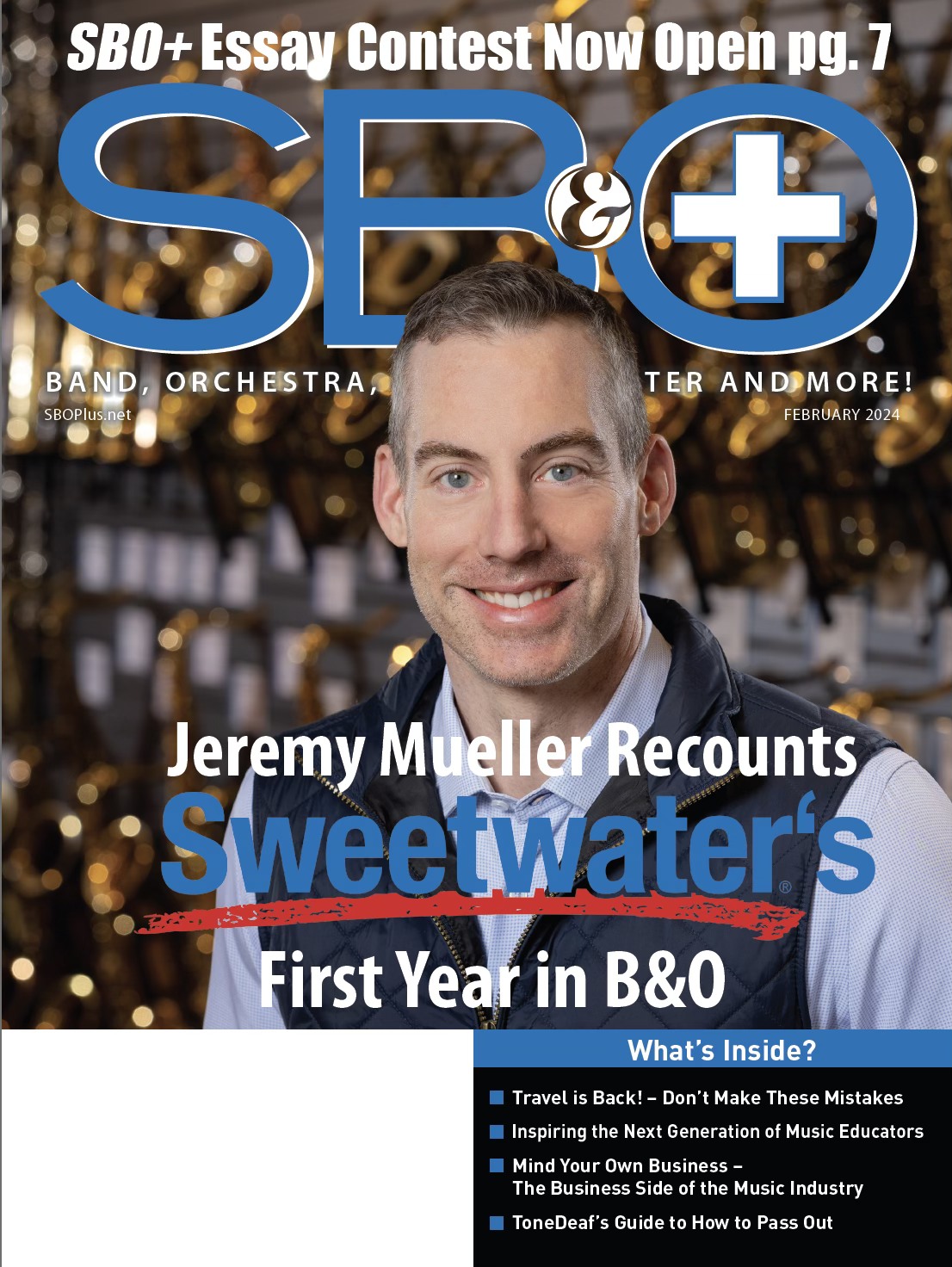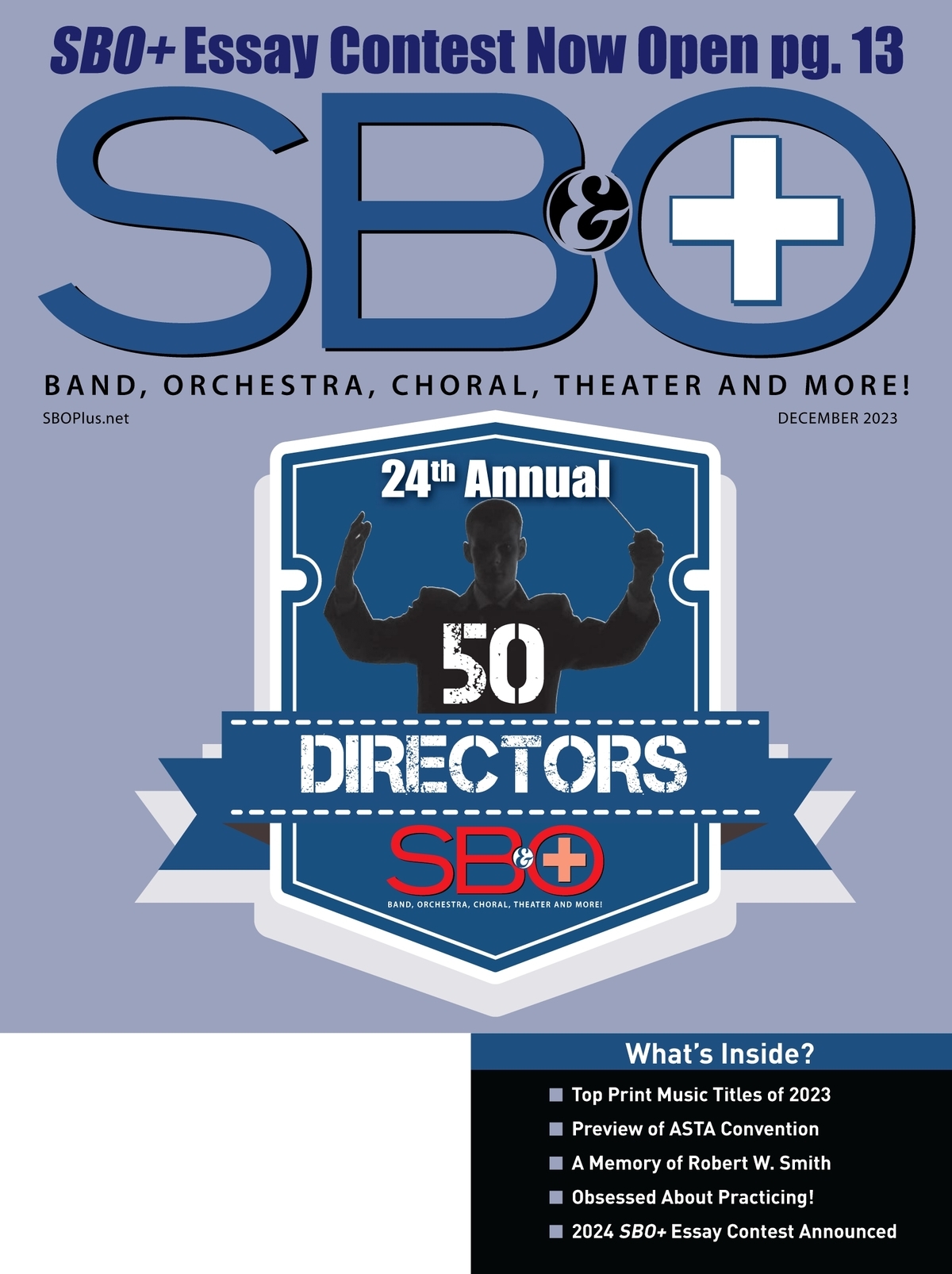EDUCATORS SUBSCRIBE FOR AS LOW AS $0.00! CLICK HERE!
By Joel Carle
With new challenges such as anti-bullying standards and the Common Core push facing music educators, I have found that it is time to get creative! By evolving my practices and programs in ways that would have been considered ludicrous even 10 years ago, I am finding ways to increase ensemble enrollment while incorporating new common core and anti-bullying standards.
An important step to increasing student participation is being open to the musical tastes of the students. During my own high school experience as a student, I would play percussion with the high school band, but I was also in a variety of rock bands on the side. There always seemed to be a divide between “school music” and “home music,” the music I listened to and played at home was completely different from the music I performed at school. As I advanced through my college career, I began to ask myself why teachers only taught limited types of music. There had to be other valid avenues to be explored. My mind began formulating plans on how I could manage running an ensemble, lessons, and theory, among other courses, while offering more options to students. Since there are finite hours in the school day, it seemed as though an afterschool group would be necessary to accomplish the feat. However for the program to be successful students would have to show a keen interest.
While it is easy for musically trained teachers to sit back and scoff at lesser forms of music, it is important for us to realize that value can be found outside of our own comfort zones. One of the first steps that I took in the direction of presenting more currently popular music led to the creation of a rock music program called “The Knights of the Rock Table.”
The Knights of the Rock Table
Prior to the start of this program, students would come up to me asking about a place to practice with their bands or to tell me how they really wanted to learn to play guitar, drums, and so on. Having a background in performing with various bands, I started to work with the students on these instruments during their (and my) lunchtimes. As the number of students grew larger and larger, I needed to expand to an afterschool time slot where we would have more than just a mere 20 or so minutes to work. As a result “The Knights of the Rock Table” was born. The program, named after our very own Windsor Black Knights, started as a twice-a-week afterschool club where students could learn “social” instruments and form small rock ensembles. Students were taught through group lessons and guided ensemble practice. As students achieved a certain level of success, my colleagues and I began to serve more as guides, promoters, and band members than as teachers. Students responded positively to this format. It didn’t take very long for students with little school music experience to take interest and start coming out of the woodwork.
The Knights of the Rock Table program is currently in its third year of existence. Student and teachers perform side by side. Many of the teachers who help with the club actually teach non-music curricula. Students get to know their teachers outside the classroom and enjoy a mutual interest in music. Quite frequently members of the group perform at various school functions and the popularity of our annual rock show has increased drastically. It is not uncommon for the rock show to have one of the highest parent attendance rates. Furthermore, I am constantly contacted to provide bands for local school and community events.
Funding
A common concern in creating a group similar to this is the cost. While our administration was gracious enough to provide some initial equipment, we had to find a way to support the group: the participating teachers volunteer their time and our performances act as fundraisers. The students are happy to have a chance to perform and be able to keep The Knights of the Rock Table going. One of our biggest sources of income is our annual rock show. Tickets are sold for the event and we run concessions, raffles, and giveaways throughout the performance. This is the only event where almost every student in the program performs. When bands perform in the community at local venues, donations are made to the club. As a result, we now provide for ourselves 100 percent. We are able to get new instruments, make repairs, and purchase miscellaneous items like sticks and strings. When contacted, I ask that a donation be made to the club.
A Safe Haven for Students
As the program increased in popularity, it acted as a gateway of sorts to get students interested in having a deeper understanding of music. Enrollment in Music Theory Class skyrocketed and concert band member numbers steadily increased, too. As a result, the music suite in our high school has become a social Mecca for all sorts of students. Everyone is welcome and negativity is not permitted. This directly correlates with the new anti-bullying standards. The music suite often houses many walks of life from the common high school scene. We have our athletes, gamers, classical musicians, pop musicians, and everything in between, hanging out and enjoying their high school experience. Since the music suite has become a haven safe from ridicule for students looking for a “place,” students want to be part of this social force.
To further the positive atmosphere and bring music education to their level, I have begun utilizing current social networking sites such as Facebook. On the music suite page, the music education and discussion continues well outside the hours of the school day and continues building the bonds between the students. On this site I serve more as a monitor, only to make sure that the content remains appropriate, while the sense of community deepens. Many students want to be in the safe environment of the music suite as much as possible. Consequently, whether that was their initial intent or not, they are signing up to participate in ensembles. These students are proud to be musicians and proud to be different. Due to the work of my colleagues and myself, the high school band has gone from roughly 30 students to over 70!
Addressing the ‘Common Core Push’
Successfully increasing music student enrollment is only part of the new challenges facing music educators. Recently, the Common Core push of teaching English and math skills has created added stress. Incorporation of these elements requires some ingenuity on our part. Naturally, math seems far easier to incorporate into our established curriculums. Rhythmic figures, intervals, and time signatures all effortlessly relate to mathematics. Unfortunately English can be much harder for the music educator to fit into the curriculum. While ensembles may not be the ideal arena for writing essays, there are other opportunities.
This year I am piloting a course entitled “Pop Music and Society.” This course essentially forms a bridge between all of the previous topics and the English common core. In Pop Music and Society, students are in charge of leading the entire class as an ensemble. Students choose the music, assign/ write parts, and ensure that every student is prepared for our in-class performance. Any type of popular music can be chosen. There could easily be country music one week and rap the next. This in turn has students listening to music that they would not normally be exposed to. Besides the performance aspect, we also have a content aspect. The students analyze lyrics, create document-based essays using articles from magazines, create opinion essays, and discuss sociological and psychological implications of music based on high-level text.
Creative Solutions Take Time
With so many teachers looking for ways to improve programs, it is time to think outside of the box. I have found my new approach successful with the students. These ideas may not be the solution to all of your program’s troubles and challenges, but hopefully they provide some motivation to try something new. We are artists: being creative is what we do! One thing is for sure, the brute force approach of limiting students to our world is causing many potential musicians to avoid joining the high school music program. You may be surprised to find that, as the creative ball gets rolling, you may enjoy your career more and more. My only disclaimer is that to do these things well takes time. When contemplating the pros and cons of trying some of these options, remember why we are here: to create good music and good people.
Joel Carle has had music education experience with almost every age group. He is currently the high school instrumental music instructor at the Windsor Central High School, in Windsor New York. He also performs and teaches privately in the Binghamton, New York area. Prior to working at Windsor, Joel has taught as an adjunct professor at SUNY Fredonia and elementary general music at Fredonia Central School District. While working at Fredonia, he directed the New Horizons jazz band for senior citizens, ran an after school music program at the Boys and Girls Club, and led a music technology program. Joel has also been a presenter at the NYSSMA Conference in Rochester, New York.









